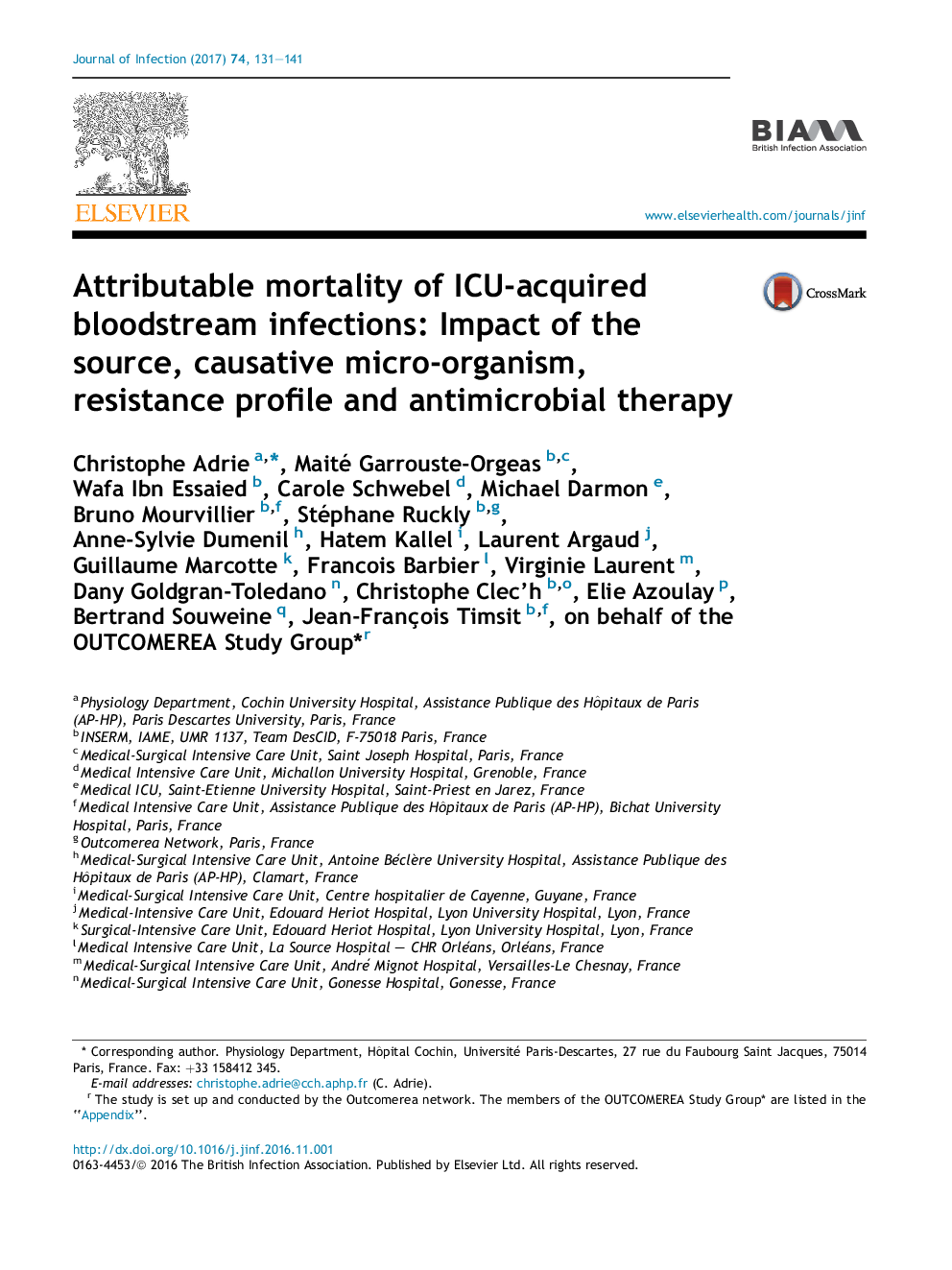| Article ID | Journal | Published Year | Pages | File Type |
|---|---|---|---|---|
| 5668756 | Journal of Infection | 2017 | 11 Pages |
â¢Bloodstream Infection acquired in ICU was associated with an increase in the risk mortality.â¢Early adequate antimicrobial therapy was associated with a better outcome.â¢This was true whatever the susceptibility of the causative bacteria.â¢Fluoroquinolone use, but not aminoglycoside use, was associated with an improved outcome.
SummaryObjectivesICU-acquired bloodstream infection (ICUBSI) in Intensive Care unit (ICU) is still associated with a high mortality rate. The increase of antimicrobial drug resistance makes its treatment increasingly challenging.MethodsWe analyzed 571 ICU-BSI occurring amongst 10,734 patients who were prospectively included in the Outcomerea Database and who stayed at least 4 days in ICU. The hazard ratio of death associated with ICU-BSI was estimated using a multivariate Cox model adjusted on case mix, patient severity and daily SOFA.ResultsICU-BSI was associated with increased mortality (HR, 1.40; 95% CI, 1.16-1.69; p = 0.0004). The relative increase in the risk of death was 130% (HR, 2.3; 95% CI, 1.8-3.0) when initial antimicrobial agents within a day of ICU-BSI onset were not adequate, versus only 20% (HR, 1.2; 95% CI, 0.9-1.5) when an adequate therapy was started within a day. The adjusted hazard ratio of death was significant overall, and even higher when the ICU-BSI source was pneumonia or unknown origin. When treated with appropriate antimicrobial agents, the death risk increase was similar for ICU-BSI due to multidrug resistant pathogens or susceptible ones. Interestingly, combination therapy with a fluoroquinolone was associated with more favorable outcome than monotherapy, whereas combination with aminoglycoside was associated with similar mortality than monotherapy.ConclusionsICU-BSI was associated with a 40% increase in the risk of 30-day mortality, particularly if the early antimicrobial therapy was not adequate. Adequacy of antimicrobial therapy, but not pathogen resistance pattern, impacted attributable mortality.
